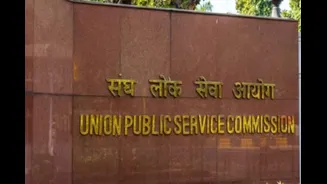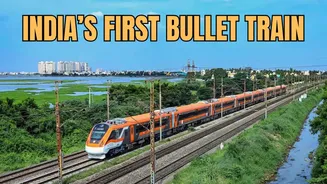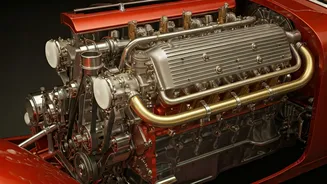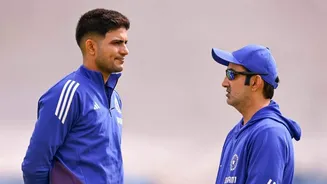Bharat today is at a crossroads. It has dethroned China as the most populous country. It has also overtaken Japan to become the world’s fourth-largest economy and is likely to become the third-largest
by 2028, leaving Germany behind. The country also aspires to become a developed nation by 2047, when it celebrates one hundred years of independence.
The road ahead to actualise the dream of Viksit Bharat is arduous and full of humongous challenges. And to scale the summit, among many things required, the nation needs a robust, transparent, incorruptible, people-oriented and development-focused civil service to enable the country to cross innumerable hurdles on the way.
This brings me to the key question: Are the Indian Civil Services future-ready to do justice to the aspirations of making Bharat a developed nation? And if the answer is “no”, what transformational changes are needed in the way civil servants are recruited and trained, and in their structure and functioning?
The Litmus Test
But to begin with, questions that beg answers are: what type of civil services does Bharat need? What litmus test must they pass? These questions were best addressed on 21 April 1947 by Sardar Vallabhbhai Patel, then Home Minister of the country and the “Father of Civil Services in Bharat”, while addressing the first batch of probationers of the Indian Administrative Service.
Here is what the Bismarck of Bharat articulated: “I would advise you to maintain the utmost impartiality and incorruptibility of administration… no Service worth the name can claim to exist if it does not have in view the achievement of the highest standard of integrity. Unhappily, India today cannot boast of an incorruptible Service, but I hope that you, who are now starting, as it were, a new generation of civil servants, will not be misled by the black sheep in the fold, but would render your service without fear or favour and without any expectation of extraneous rewards.”
Failing The Test
At the outset, I posit that civil services and civil servants today (exceptions apart) fail the litmus test so categorically articulated by Sardar Patel. Here is what appears to have happened:
- Having been myself being a part of the Civil Services in the past, I submit humbly that the tribe of neutral civil servants who can render service without fear or favour and without the expectation of extraneous rewards is vanishing fast.
- Civil servants have become accustomed to a culture of entitlement, and service orientation has taken a back seat.
- Trained as generalists and administrators, an increasingly large number of civil servants lack the expertise needed to address the humongous challenges of fast-tracking development and the myriad challenges that must be squarely met to make the country a developed nation.
- The cancer of corruption has taken a chokehold in an era where culprits often go unpunished.
- Civil services are not attuned to the temper of the changing times or to the requirements of citizens and society.
- The Services are in critical need of new delivery models and continuous capacity building.
The above are just a few of the many challenges confronting the civil services today. Band-aid solutions will no longer provide succour, and it is time for transformative changes.
Two-Part Deep Dive
This two-part explainer focuses on urgent transformational reforms in every aspect of the Civil Services in India to make civil servants fighting fit to be agents of transformation as the country strives to become Viksit Bharat by 2047.
Owing to the importance of the subject, while writing this piece, I held the widest possible consultations with civil servants of all genres as well as other experts and stakeholders. And what I have learnt numbs me.
After examining what ails the civil services, I provide a time-bound, sustainable pathway to reboot and reimagine them so they may rise to the demands of making Bharat a “Viksit Nation”.
But to get a fuller perspective, I must begin with when, where and how it all began.
It Began Here
During British rule, the civil services evolved over more than a century. The story began with the appointment of apprentices, writers and factors nominated by the Directors of the East India Company, who were allowed to carry out private trade in lieu of a fixed salary. The first reforms were introduced by Warren Hastings and the Regulating Act of 1773, which banned private trade by civil servants involved in collecting revenues or providing justice.
Father Of Civil Service In India
Lord Cornwallis, the Governor-General of India (1786–1793), implemented far-reaching reforms that earned him the moniker “Father of the Civil Service in India”.
He introduced the following key reforms:
- The Cornwallis Code (1793), which established structured and efficient administration.
- Separation of powers between the executive and the judiciary.
- Establishment of a hierarchy of courts.
- Creation of the posts of district superintendent of police.
- Abolition of Company servants’ private trade and raising of salaries to ensure honest service.
- Creation of the Covenanted Civil Service (for Europeans in high positions) and the Uncovenanted Civil Service (for Indians in subordinate roles).
Reforms Under Wellesley (1798–1805)
Lord Wellesley established the College of Fort William in Calcutta (1800) to equip civil servants with proficiency in Indian languages, literature and culture, and the skills needed for effective governance.
Wellesley believed that honest and efficient administration could best be achieved through training, not merely by raising salaries or enforcing discipline.
In 1806, the East India Company directors replaced the College of Fort William with Haileybury College in England to train the Company’s civil servants for employment in India.
The Charter Act Of 1833
This was landmark legislation that:
- Theoretically opened administrative jobs to Indians.
- Made Lord William Bentinck, previously Governor-General of Bengal, the first Governor-General of India with sweeping powers over civil, judicial and military matters.
- Established the first Indian Law Commission under Lord Macaulay to codify laws, directly impacting administrative and civil procedures.
- Made the East India Company a purely administrative body, without commercial functions.
The Macaulay Report And Charter Of 1853
Chaired by Lord Macaulay, the Report of the Select Committee of the British Parliament shaped the modern Indian civil services.
Its key reforms included:
- A permanent, merit-based civil service recruited through open competitive examinations, replacing patronage-based recruitment under the East India Company.
- Creation of the Civil Service Commission (1854) in London, which held the first Indian Civil Service exam in 1855.
- Open, merit-based competition that eventually led to the gradual entry of Indians into the civil services.
- Merit-based recruitment that inspired future reforms in both Indian and British civil services and continues to influence the structure and values of Indian civil service recruitment today.
Training
ICS probationers underwent structured training at Haileybury College (England), followed by orientation in India. The training curriculum included Latin, Greek and English literature; Indian languages; British, European and Indian history; civil and criminal law (British and Indian); general and revenue administration; land settlements; judicial administration; Indian customs and culture; and ethics and the code of conduct.
Over time, training became more India-centric, with greater immersion in Indian administrative methods, fieldwork, and exposure to real-life challenges through attachment to senior district officers.
Catch Them Young
The age-limit eligibility for the Indian Civil Service followed the principle of “catch them young”.
The age limits at different times were as follows:
- 1853 Charter Act – 18 to 23 years
- 1860 – maximum 22 years
- 1868 – maximum 21 years
- 1878 – maximum 19 years under Lord Lytton’s tenure
- 1886 onwards – maximum 23 years
In The Making
Section 96(C) of the Government of India Act, 1919, provided for the setting up of a Public Service Commission to discharge functions relating to the recruitment and control of public services in India.
The Royal Commission (1924), also known as the Lee Commission, recommended the immediate establishment of a Public Service Commission in India.
Becoming
On 1 October 1926, the Public Service Commission in India was set up with four Members and a Chairman, with Sir Ross Barker, a member of the Home Civil Service of the UK, as the first Chairman.
The functions of the Public Service Commission were regulated by the Public Service Commission (Functions) Rules, 1926, framed under sub-section (2) of Section 96(C) of the Government of India Act, 1919.
Strengthening
The Government of India Act, 1935 envisaged a Public Service Commission for the Federation and a Provincial Public Service Commission for each Province. Consequently, on 1 April 1937, the Public Service Commission was rechristened the Federal Public Service Commission.
Other Key Services Before Independence
Firstly, IPS – The first Imperial Police Service exam was held in England in June 1893, and Indians were allowed entry into the Imperial Police after 1920. From the next year, exams were conducted both in England and India.
Indianisation of the police service was slow despite the Islington and Lee Commission recommendations. Until 1931, Indians were appointed against only 20 per cent of the total posts of SPs. However, due to the non-availability of European candidates, more Indians were appointed to the Indian Police from 1939 onwards.
Secondly, Central Civil Services – Civil Services in British India were classified as covenanted and uncovenanted services. The Aitchison Commission (1887) bifurcated them into:
- Imperial Services – recruited and controlled by the Secretary of State.
- Provincial Services – recruited and controlled by Provincial Governors.
The Government of India Act, 1919 gave birth to the Central Services when it bifurcated the Imperial Services into two – All India Services and Central Services. The latter dealt with matters under the direct control of the Central Government.
Combined Exam For Central Civil Services
Before Independence, a combined examination was held in India for many Central Services — the Indian Audit and Accounts Service, the Imperial Customs Service, the Indian Railway and Accounts Service, the Military Accounts Department, the Postal Superintendents (Class II) Service, and the Transportation (Traffic) and Commercial Departments of the Superior Revenue Establishment of State Railways.
India Becomes Independent
In the paragraphs below, I recount the key reforms recommended by various committees and commissions appointed after Independence in 1947. Part I broadly deals with the reforms proposed by the following:
- Public Administration Reforms Committee – A.D. Gorwala (1951).
- Public Services (Qualifications for Recruitment) Committee – Mudaliar Committee (1956).
- Krishnamachari Committee to reform the Indian and State Administrative Services and Problems of District Administration (1962).
- First Administrative Reforms Commission – Committee on Recruitment Policy and Selection Methods (1969).
- Kothari Committee – Recruitment Policy and Selection Methods for the Civil Services Examination (1974–1976).
These five reports recommended foundational reforms to the examination system, age eligibility, syllabus, training, capacity building, etc. for the civil services. The government accepted some of the easier reforms, but many critical reforms have been ignored to date.
I begin with the creation of the UPSC after the promulgation of the Constitution of India on 26 January 1950.
Reborn
After the promulgation of the Constitution of India, the Federal Public Service Commission (FPSC) was rechristened the Union Public Service Commission (UPSC), with the Chairman and Members of the FPSC becoming the UPSC Chairman and Members under Clause (1), Article 378 of the Constitution.
The Act Of 1951
Parliament enacted the All-India Services Act, 1951 to regulate the recruitment and service conditions of All India Services — IAS, IFS, IPS and other notified services.
The Act inter alia:
- Defined All India Services and provided for the creation of additional services.
- Empowered the Government of India to formulate rules governing recruitment, promotions, pay, discipline, etc.
- Has been amended many times.
- While recruitment was done centrally, the Act provided for officers to be allotted to state cadres, serving both state and central governments.
The Act provides the legal framework for recruitment, regulation, discipline and development of the country’s top bureaucratic cadre and ensures uniformity, discipline and merit-based systems.
A.D. Gorwala Committee (1951)
The A.D. Gorwala Committee was the first, after Independence, to take up the subject of reforms in the civil services. Its key recommendations included:
- Merit-based, transparent recruitment.
- Maximum age limit of 21–24 years for civil services entry, with a five-year concession for SC/ST candidates.
- Robust training.
- Enhancement of efficiency and ensuring strict discipline in the civil services.
- Depoliticisation of services.
Dr A. Ramaswami Mudaliar Committee (1956)
Its key recommendations included:
- A 21–23-year age band for the civil services examination.
- A university degree as the minimum qualification.
- An examination designed to objectively evaluate the knowledge, aptitude and suitability of candidates.
1st Administrative Reforms Commission (ARC) (1966–70)
Its foundational reforms included, among others:
- A unified competitive examination for all Class-I services.
- Maximum age limit of 26 years.
- A national policy for continuous civil services training.
- Merit-based promotion in place of purely seniority-based promotion.
- Fairness in postings and promotions — transparent cadre management.
- Citizen-centric accountability — Lokpal/Lokayukta.
- Ethics reforms.
Kothari Committee (1974–1976)
The Kothari Committee recommended 55 fundamental reforms, including:
- A single unified three-stage examination for all the civil services.
- Three sequential exam stages: Preliminary examination (objective type) as the screening test, Mains examination (written and interview) to determine entry to the academy, post-training test by UPSC after the one-year foundation course.
- Service allotment after the post-training test with a marks weightage of 70:30 between the selection exam and the post-training exam.
- Age eligibility of 21–26 years; maximum attempts permitted — two.
- Examination medium expanded from English-only to all languages in the Eighth Schedule.
Had the government implemented the foundational reforms recommended by the Kothari Committee, we would have reimagined the civil services in Bharat today.
It was not to be.
The Grand Disruption
Contrarily, the government of the day cherry-picked easy reforms and ignored foundational ones. After the Kothari Committee, many other committees suggested fundamental reforms. More importantly, the Second Administrative Reforms Commission (2005–2009) submitted around 15 reports on various aspects of governance, making 1,514 recommendations for reforms. Even NITI Aayog, beginning in 2018, has recommended far-reaching reforms.
While key recommended reforms remain unimplemented to date, the civil services have rapidly degenerated into chaos and confusion, breeding mediocrity, with an increasingly large number of civil servants interested in self-aggrandisement and bereft of service orientation.
In Part II, I deal with this grand disruption and provide the desired nostrum to transform the civil services, with the primary focus on reforming civil services examinations, training, efficiency, effectiveness, ethics and booting out the deadwood from the system.
The author is a multidisciplinary thought leader with Action Bias, India-based international impact consultant, and keen watcher of changing national and international scenarios. He works as president, advisory services of consulting company BARSYL. Views expressed in the above piece are personal and solely those of the author. They do not necessarily reflect News18’s views.
















